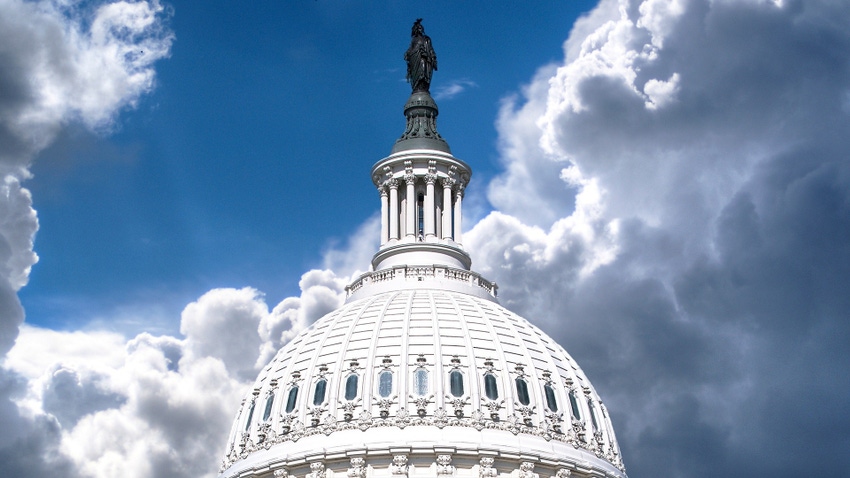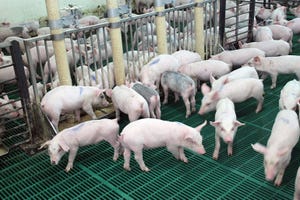Legislative Watch: CFAP 2 payments for contract producers; Masks required in federally inspected meat plants; USDA accepts 2.8 million CRP acres.

The House of Representatives has passed the fiscal year 2022 budget resolution on a party-line vote. Speaker Pelosi, D-Calif., reached an agreement with 10 moderate Democrats that the House would consider the infrastructure package no later than September 27 in order for the resolution to pass.
Now that the House and Senate have passed the budget resolution, the next step is for committees to begin developing language to implement the resolution instructions given the committees. They have until September 15 to finalize their provisions after which they will be merged into a budget reconciliation package for final consideration.
The Senate Agriculture Committee was given $135 billion with instructions to address agriculture conservation, drought, and forestry programs to help reduce carbon emissions and prevent wildfires, rural development and rural co-op energy investments, agricultural climate research and research infrastructure, Civilian Climate Corps funding, child nutrition, and debt relief. The House Agriculture Committee will address the above issues except for child nutrition which will be considered by the House Education and Labor Committee.
The Senate Finance Committee and House Ways and Means Committee were given instructions to find revenue/taxes to help offset the cost of the package. It is expected the final package will have higher taxes on the wealthy and corporations, taxes on imported carbon fuels and strengthened IRS tax collections.
Farm and commodity organizations will be watching closely if the committees address stepped-up basis.
USDA updates CFAP 2 payments for contract producers
USDA's Farm Service Agency (FSA) announced it was updating the Coronavirus Food Assistance Program 2 (CFAP 2) for contract producers of eligible livestock and poultry. CFAP 2 was developed to assist producers who experience market disruption because of COVID-19.
Last December, Congress through the Consolidated Appropriations Act of 2021 provided up to $1 billion for payments to contract producers of eligible livestock and poultry for revenue losses from January 1, 2020 through December 27, 2020. Contract producers of broilers, pullets, layers, chicken eggs, turkeys, hogs and pigs, ducks, geese, pheasants and quail may be eligible for assistance. Eligible breeding stock produced under contract may also qualify.
The update means producers can use eligible revenue from the period of January 1, 2018 through December 27, 2018 instead of the period of January 1, 2019 through December 27, 2019 if it is more representative. This change gives producers greater flexibility.
FSA administrator Zach Ducheneaux said, "We listened to feedback and concerns from producers and stakeholders about the gaps in pandemic assistance, and these adjustments to CFAP 2 help address unique circumstances, provide flexibility and make the program more equitable for all producers."
October 12 is the deadline for eligible producers to submit or modify CFAP 2 applications.
African swine fever webinars
USDA's Animal and Plant Health Inspection Service (APHIS) will be conducting daily webinars on African swine fever (ASF) September 13-17. APHIS will discuss the global spread of ASF, actions they are taking to safeguard the U.S. and biosecurity measures producers can implement to protect the U.S. herd.
Masks requiremened in federally inspected meat plants
Federally regulated meat plants that are located in a county with "substantial" or "high" COVID-19 rates must follow the latest Centers for Disease Control and Prevention (CDC) guidance on masking. Employees or contractors will be required to wear masks when USDA's Food Safety Inspection Service (FSIS) inspection personnel are present.
USDA accepts 2.8 million CRP acres
USDA announced it was accepting 2.8 million acres into the Conservation Reserve Program (CRP) in 2021. This is short of the goal of 4 million acres.
Approximately 1.9 million acres were accepted through the General CRP Signup and over 897,000 acres were enrolled through the Continuous Signup. The Continuous Signup remains open.
Farm Service Agency Administrator Zach Ducheneaux said, "Despite Congress raising the enrollment target in the 2018 Farm Bill, there have been decreases in enrollment for the past two years. The changes we made this spring have put us on the path to reverse this trend. Even with the improved direction, USDA will still be about 4 million acres below the enrollment target. The CRP benefits for producers, sportsmen, wildlife, conservation and climate are numerous and well documented. We cannot afford to let them to be left on the table."
The 2018 Farm Bill set a cap of 25.5 million acres for fiscal year 2022. There are approximately 20.6 million acres currently enrolled in CRP.
Sources: P. Scott Shearer, who is solely responsible for the information provided, and wholly own the information. Informa Business Media and all its subsidiaries are not responsible for any of the content contained in this information asset.
About the Author(s)
You May Also Like



